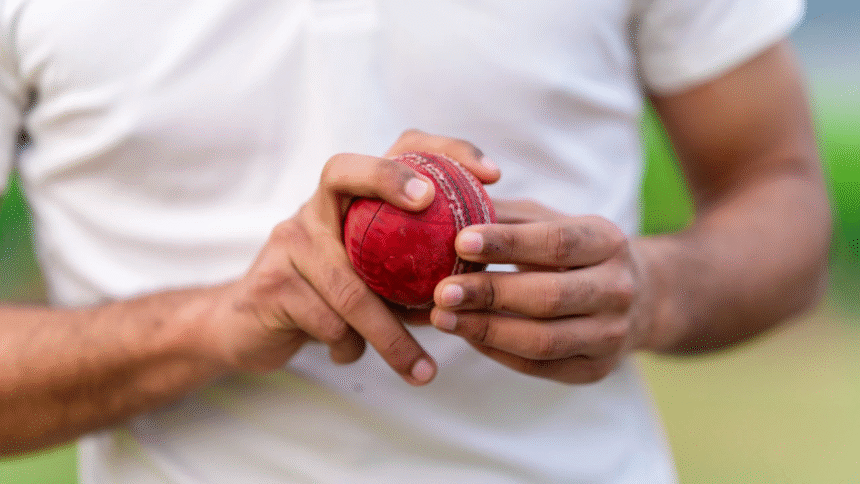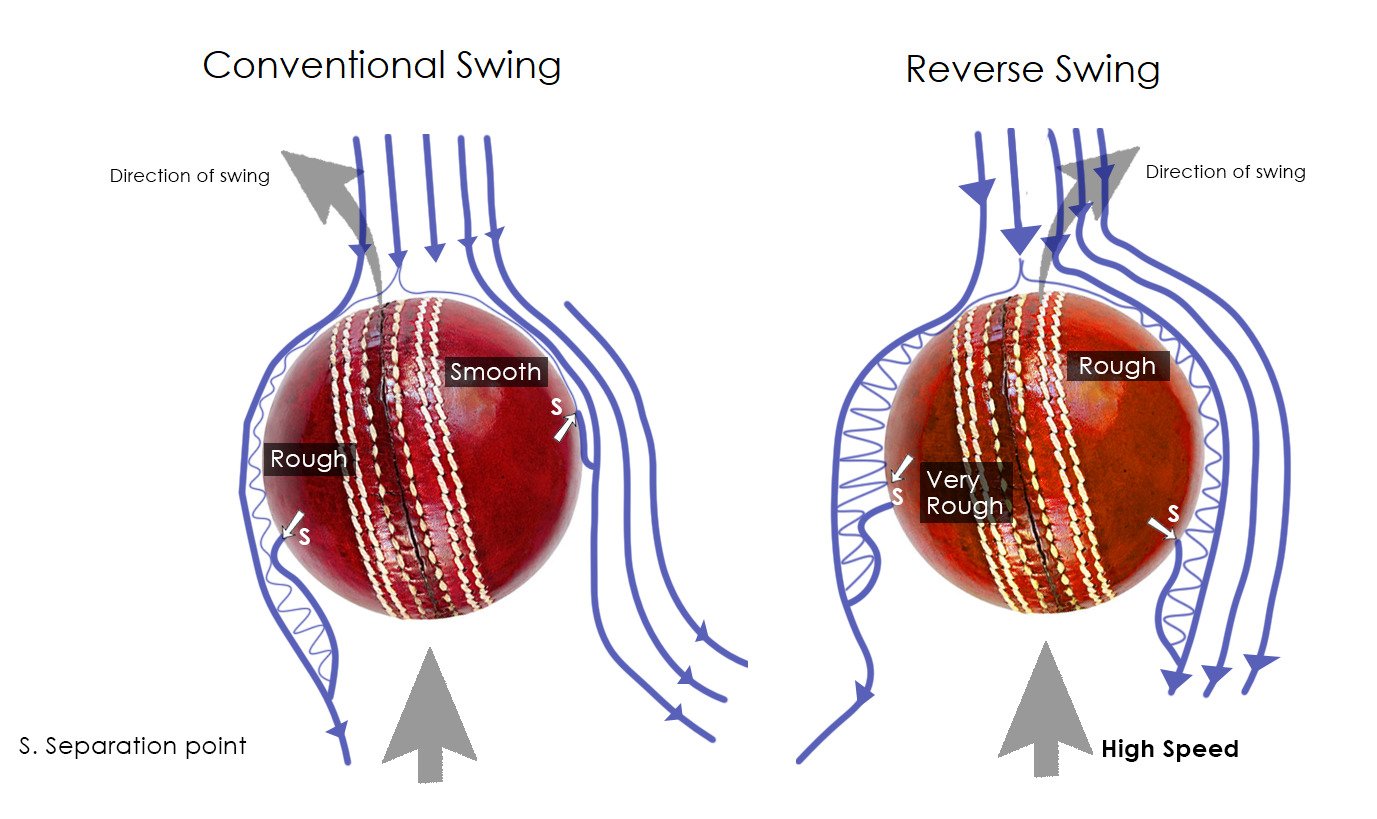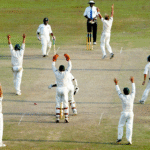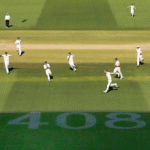Cricket is a game of nuances, and one of its most fascinating dimensions lies in the dark art of Reverse Swing in Cricket. Unlike conventional swing, which occurs when a new ball moves through the air due to the disparity in its shiny and rough sides, Reverse Swing in Cricket is an enigma that challenges even the best batsmen in the world. It defies conventional movement, coming late and sharp, often catching the batter off guard. Over the years, this phenomenon has evolved from a curiosity into one of the most lethal weapons in a fast bowler’s arsenal.
This article dives deep into the mechanics of reverse swing, how bowlers develop and master the skill, and the impact it has on modern-day cricket.
Understanding Reverse Swing in Cricket: What Makes It Different?
At its core, Reverse Swing in Cricket is the movement of the cricket ball in the air towards the shiny side, which is the exact opposite of conventional swing. This typically occurs when the ball is old—usually after 30 or more overs—and the surface is significantly rough on one side, while the other is polished through continuous rubbing and maintenance.
In conventional swing, the ball swings in the direction of the rough side. But in Reverse Swing in Cricket, especially when delivered at high speeds (above 85 mph or 135 km/h), the ball swings toward the shiny side. The reverse swing can be especially deadly because of its late movement, which gives the batsman minimal time to react.
The Science Behind Reverse Swing in Cricket
The aerodynamics behind Reverse Swing in Cricket is complex yet fascinating. As the ball ages and wears, the difference in air resistance between the rough and smooth sides increases. When bowled at high velocity, the smooth side forces the laminar airflow to cling longer, while turbulent airflow is disrupted earlier on the rough side. This discrepancy in airflow behavior causes the ball to move sharply toward the shiny side.
However, this only happens when certain conditions are met:
- High pace
- Low humidity
- Dry outfields
- Meticulous ball maintenance
These factors collectively create an environment conducive to reverse swing.
A detailed scientific explanation from ESPNcricinfo outlines how airflow and seam position contribute to different types of swing, offering further insights into this mysterious craft.
Historical Origins: Who Started It All?
The art of Reverse Swing in Cricket is often credited to Pakistani fast bowlers during the 1970s and 1980s. Players like Sarfraz Nawaz, Wasim Akram, and Waqar Younis revolutionized pace bowling with their mastery of reverse swing. Sarfraz is widely acknowledged as one of the pioneers, while Wasim and Waqar took the skill to a new level with their lethal pace and pinpoint accuracy.
Their ability to swing the old ball late and at high speed not only brought Pakistan tremendous success but also forced other nations to adopt the technique. It marked a turning point in the evolution of fast bowling.
Modern Masters of Reverse Swing
Reverse Swing in Cricket is no longer confined to the subcontinent. Modern-day greats from various nations have adopted and refined it.
- James Anderson (England): Known more for conventional swing, Anderson has, in recent years, become adept at using reverse swing in dry conditions, particularly on subcontinental pitches.
- Mitchell Starc (Australia): Starc’s deadly late inswinging yorkers are often a result of Reverse Swing in Cricket, executed at blistering speeds.
- Jasprit Bumrah (India): Bumrah combines pace, accuracy, and subtle wrist positions to extract reverse swing even on lifeless Indian pitches.
- Dale Steyn (South Africa): One of the most fearsome bowlers of the modern era, Steyn used reverse swing masterfully during the final spells of innings.
These bowlers show that Reverse Swing in Cricket is not merely a subcontinental specialty anymore—it’s a global weapon.
How Bowlers Master Reverse Swing
Mastering Reverse Swing in Cricket is a complex, multi-faceted process. It involves not only skill and practice but also teamwork and situational awareness.
Ball Management
The fielding team must carefully manage the ball’s condition—preserving the shine on one side while allowing natural wear on the other. Bowlers and support staff monitor this closely during games.
Seam and Wrist Position
Maintaining a stable seam position and consistent wrist alignment is crucial. Unlike conventional swing, where the seam leads the direction of movement, in reverse swing, the wrist and release control the deviation.
Pace is Paramount
Speed is non-negotiable. Reverse swing becomes significantly more pronounced at speeds above 85 mph. Bowlers often train specifically to maintain high intensity even deep into their spells.
Tactical Awareness
Knowing when to introduce reverse swing can turn a game on its head. Often used in the middle or latter stages of an innings, a well-timed reverse-swinging spell can dismantle even settled batting lineups.
Conditions Favoring Reverse Swing
Certain conditions are more conducive to Reverse Swing in Cricket than others. These include:
- Dry Pitches: Common in India, UAE, and Australia
- Rough Outfields: Helps scuff up the ball naturally
- Low Humidity: Aids in preserving the shine
- Longer Innings: More overs mean more wear on the ball
Captains and bowlers often strategize around these conditions, planning their bowling spells accordingly to maximize the effect of reverse swing.
Reverse Swing in T20s and ODIs
Traditionally associated with Test cricket, Reverse Swing in Cricket has started making waves in shorter formats too. With white balls be use for only 25 overs per innings in ODIs and 20 overs in T20s, the scope is limit. However, skillful bowlers like Shaheen Afridi and Trent Boult have shown glimpses of reverse swing in death overs, particularly when the ball gets rough up quickly.
The Controversies Surrounding Reverse Swing
Given its effectiveness, Reverse Swing in Cricket has sometimes drawn suspicion. Allegations of ball tampering have often be link to artificially scuffing one side of the ball. While maintaining the ball is legal, altering its condition through unfair means—such as using fingernails, foreign substances, or deliberately rough surfaces—is prohibit.
High-profile controversies have emerged over the years, sparking debates about legality and ethics in cricket. However, with better umpiring standards and technology, Reverse Swing in Cricket is now more understood and accepted as a legitimate skill.
Read More: The Most Consecutive Wins in Test Cricket – Which Team Dominated the Longest?
Conclusion
In the modern era of cricket, where batters dominate flat tracks and high scores are the norm, Reverse Swing in Cricket stands as a great equalizer. It demands skill, intelligence, and relentless discipline from bowlers. From its origins on dusty Pakistani grounds to the global stage, reverse swing has evolved into a symbol of bowling mastery.
For any budding fast bowler or cricket enthusiast, understanding and appreciating the nuances of reverse swing is essential. It’s not just about speed—it’s about precision, conditions, and mental toughness.







